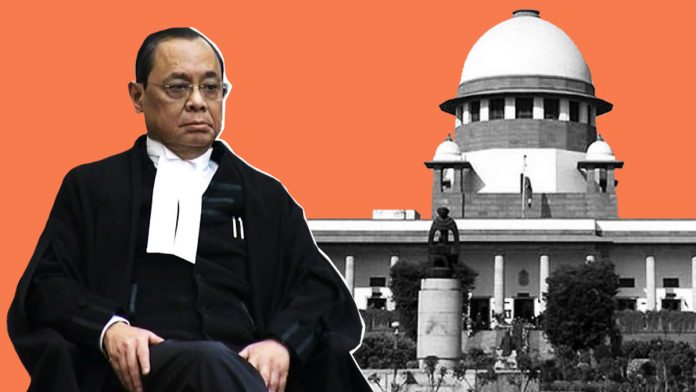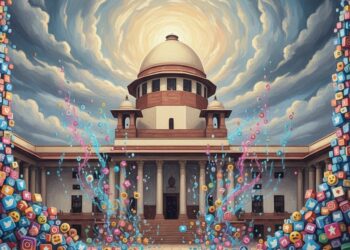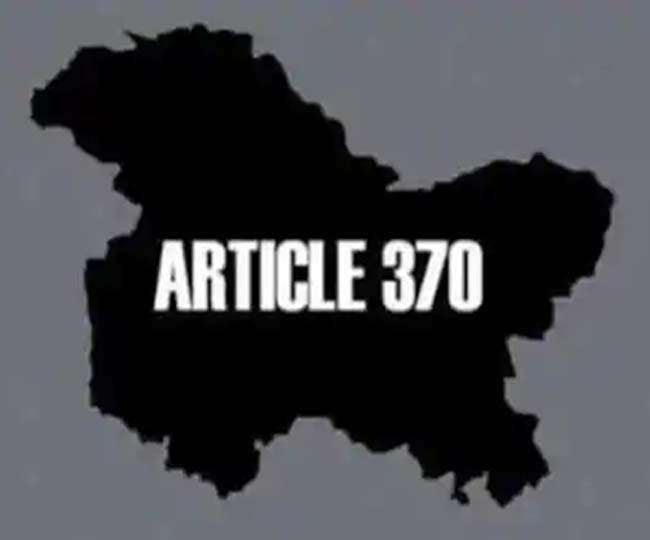The special sitting of the Supreme Court on April 20, 2019, convened and presided over by the Chief Justice of India (CJI), Justice Ranjan Gogoi, with Justice Arun Mishra and Justice Sanjiv Khanna forming the bench to deal with a matter “of great public importance touching upon the independence of the judiciary” was quite clearly not a judicial hearing to adjudicate the complaint filed by a former Junior Court Assistant of the Supreme Court by way of a letter to twenty-two (22) judges of the Supreme Court, copies of which were also dispatched to several media organizations, a few of which emailed a questionnaire to the Chief Justice seeking a response to the allegations, which was responded to by the Secretary General of the Supreme Court by an email to several media houses denying the allegations leveled against the CJI and clarifying that the services of the said former employee were terminated for “several counts of misconduct.”
The email by the Secretary General added, “It appears that these false allegations are being made as a pressure tactics (sic) to somehow come out of the various proceedings which have been initiated in law, against her and her family, for their on (sic) wrong doings. Its is (sic) also very possible that there are mischevious (sic) forces behind all this, with an intention to malign the institution.”
When the Supreme Court convened a special sitting on April 20, 2019, it was neither acting in the judicial capacity, nor in the administrative capacity, as it did not take judicial cognizance of the said allegations against the CJI and did not pass any judicial orders affecting the rights of any of the parties involved. It only made a request to the media to report responsibly. At the end of the special sitting, the Supreme Court passed a formal order stating in clear terms that it was not passing a “judicial order”, and the order was signed only Justice Mishra and Justice Khanna indicating that the CJI had formally dissociated himself from even the non-judicial order passed by the court.
“Having considered the matter, we refrain from passing any judicial order at this moment leaving it to the wisdom of the media to show restraint, act responsibly as is expected from them and accordingly decide what should or should not be published as wild and scandalous allegations undermine and irreparably damage reputation and negate independence of judiciary. We would therefore at this juncture leave it to the media to take off such material which is undesirable,” said the Supreme Court.
Apparently, in an unprecedented move the Supreme Court sat, probably for the first time ever, in quasi-judicial capacity as a constitutional institution with the CJI speaking as the head of the institution responding to what was seen as an attack on the independence of the Judiciary. Whether or not it was the best or the most tactful way to deal with the issue is a different question, but most of the questions that have been raised and criticisms mounted presuppose that the Supreme Court was acting as a court of law hearing a case on the judicial side, which is clearly an incorrect assumption. However, such an assumption could well be fueled by the fact that never before has the Supreme Court spoken as an institution, which could be because while there have been attempts to compromise the independence of the Judiciary in the past, this one, if it is such an attempt, is unique in hitting way below the belt.
 There is a separate and independent mechanism on the administrative side of the Supreme Court to deal with complaints against sexual harassment within the framework of Sexual Harassment of Women at the Workplace (Prevention, Prohibition and Redressal Act) Act, 2013 read with the Gender Sensitization and Sexual Harassment of Women at the Supreme Court of India (Prevention, Prohibition and Redressal) Regulations, 2013. The mechanism provides for a designated inquiry committee to take cognizance of a sexual harassment complaint and constitute an Internal Sub-Committee to conduct a fact-finding inquiry for the purpose of recommending punitive measure against the individual found guilty. The Supreme Court regulations of 2013 are not in derogation of any other law in force in this regard, which means that the victim can have recourse to such other remedies that might be available to her under any other statute.
There is a separate and independent mechanism on the administrative side of the Supreme Court to deal with complaints against sexual harassment within the framework of Sexual Harassment of Women at the Workplace (Prevention, Prohibition and Redressal Act) Act, 2013 read with the Gender Sensitization and Sexual Harassment of Women at the Supreme Court of India (Prevention, Prohibition and Redressal) Regulations, 2013. The mechanism provides for a designated inquiry committee to take cognizance of a sexual harassment complaint and constitute an Internal Sub-Committee to conduct a fact-finding inquiry for the purpose of recommending punitive measure against the individual found guilty. The Supreme Court regulations of 2013 are not in derogation of any other law in force in this regard, which means that the victim can have recourse to such other remedies that might be available to her under any other statute.
While the in-house mechanism is likely to be invoked in due course, the special sitting of the Supreme Court was not part of it because the CJI was not in receipt of a report from the Internal Sub-Committee as contemplated by the Supreme Court Regulations, 2013 and the complainant had not been put to notice for the hearing, which indicates that this was not a case of the Supreme Court taking judicial cognizance of the matter and sitting in judgment on the complaint as a court of law.
It was the Supreme Court responding to what it saw as an attack on its independence in the garb of allegations of sexual harassment against the Chief Justice of India. Since in convening a special sitting the Supreme Court was not acting as a court of law seized of a matter on the judicial side, properly speaking, the question of its abiding by the Principles of Natural Justice does not arise simply because it was not pronouncing upon or even examining the right of any individual, including the Chief Justice of India himself. No doubt one cannot be a judge in one’s own cause, but this was not a hearing on merits, but at the very best, a quasi-judicial sitting aimed at acknowledging and standing up to a threat, real or perceived.
Another presuppositional error that the critics of the special sitting seem to be making is to see the sexual harassment complaint as a mere complaint against an individual judge and not as an attack on the institution itself, which is contrary to — and also amounts to ignoring — the basic rationale behind the special sitting, which was necessarily in response to a perceived attack on the institution itself and not a reaction to a mere complaint against an individual judge, and for that reason the Chief Justice of India, as the head of the institution, had to be a part of the special sitting to speak for the institution. CJI was, thus, not being a judge in his own cause, but was speaking for and in defense of the institution, after which he handed over the proceedings to his brother judges on the Bench, which, in effect, amounts to recusal.
Judiciary Attacked?
It is too early in the day to comment on the merits of the complaint, but we cannot afford to ignore the possibility of a thoroughly thought out attack on the higher judiciary to compromise its independence by calling into question it’s moral standing in public estimation because there is no other way of interfering with judicial independence, for the Judiciary, particularly the Supreme Court, is by far the strongest constitutional institution, the power of which has only grown over the years and has been deeply resented by all successive governments, increasingly so in the past decade.
The Supreme Court has zealously and jealousy protected its independence against all kinds of direct and indirect attacks, encroachments and influences as far as possible within the constitutional scheme and sometimes, when the occasion so demanded, by way of extraordinarily creative readings of the Constitution in consonance with its spirit. Needless to say that it is in no small measure owing to the timely interventions by the Supreme Court that we have a thriving democracy in India.
Since power abhors restraints, independent institutions are always a nagging problem to it. The higher judiciary in India with the Supreme Court at the top presents the most difficult of such problems because it is way too powerful and aggressively independent to be directly confronted as an institution, which leaves only the people manning it vulnerable — the only chink in the otherwise impregnable armour, so to speak — because at the end of the day the institutions are just as powerful and independent as the people manning them.
In the recent times, we have seen the independence of the key institutions of democracy, constitutional and otherwise, brought under serious question except that of the Supreme Court, which, being the supreme guardian of the Constitution, is also the protector of institutional independence in the country. It is for this reason that the possibility of an attempt to erode the authority of the Supreme Court by concocting and fanning scurrilous allegations against the CJI cannot be overlooked, for this may not be the case of another powerful man abusing his power, and may also not be just a “personal attack” against the CJI. Instead, this might be the start of an attempt to systematically undermine the moral authority of the highest court in the eyes of the people.
The allegations against the CJI need to be most thoroughly investigated because any such forces that seek to subvert judicial independence would certainly not make a half-hearted attempt at it. Therefore, the story, even if completely fabricated, would not readily fall, and by the time it does fall, the damage might have already been done, if we are not adequately watchful, which might explain why the Supreme Court in its special sitting counseled the media to exercise caution and restraint in reporting on the issue because the purpose of such false allegations is not necessarily to prove the guilt but to create enough buzz to whip up a cloud of doubt. No person, be howsoever high, is not above the law, including the CJI. However, in this one case presumption of guilt must be resisted, for the stakes are too high and while it is true with regard to sex related crimes that powerful men try to hide behind their power, position or high office, it is also just as true that not all accusers are the speakers of truth or seekers of justice; some are motivated imposters, too.
The Supreme Court did nothing illegal, unfair or improper in convening the special sitting or conducting it, and the widespread criticism being mounted against the apex court or the CJI in this regard is largely misplaced, misinformed and unfounded.
Originally published in Lawyers Update [May 2019, Vol XXV, Part 5].





